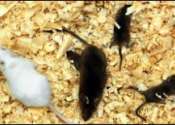Tracking a gigantic sunspot across the Sun
An active region on the sun – an area of intense and complex magnetic fields – rotated into view on Oct. 18, 2014. Labeled AR 12192, it soon grew into the largest such region in 24 years, and fired off 10 sizable solar ...






